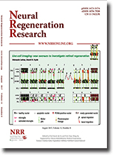
Neuroscience Bulletin
Scope & Guideline
Connecting researchers through groundbreaking findings.
Introduction
Aims and Scopes
- Neurobiology of Disease:
Focus on the mechanisms underlying neurological diseases, including Alzheimer's, Parkinson's, epilepsy, and multiple sclerosis. The journal presents studies that explore molecular pathways, genetic factors, and potential therapeutic targets to mitigate disease progression. - Neurotechnology and Methodological Advances:
Emphasis on innovative methodologies in neuroscience, including neuroimaging, electrophysiology, and optogenetics. Papers often describe novel tools and techniques that enhance our ability to study neural circuits and brain function. - Neural Circuitry and Behavior:
Investigation of how neural circuits modulate behavior, cognition, and emotional responses. This area includes studies on learning, memory, anxiety, and sensory processing, offering insights into the relationship between neural activity and behavioral outcomes. - Neuroinflammation and Immune Response:
Exploration of neuroinflammatory processes and their role in neurological disorders. Research often addresses the interactions between the immune system and the nervous system, including the role of microglia and astrocytes in health and disease. - Developmental Neuroscience:
Studies focused on the developmental aspects of the nervous system, including neurogenesis, synaptic plasticity, and the impact of early-life experiences on brain development. This area aims to understand how developmental processes influence behavior and susceptibility to disorders. - Translational Neuroscience:
Research that bridges basic neuroscience and clinical applications, aiming to translate findings into therapeutic strategies. This includes studies on pharmacological interventions, gene therapy, and novel treatment approaches for neurodegenerative diseases.
Trending and Emerging
- Machine Learning and Artificial Intelligence in Neuroscience:
An increasing number of studies apply machine learning techniques to analyze complex neurobiological data, enhancing our ability to predict outcomes and understand neural patterns. - Neuroimmune Interactions:
Research focusing on the intersection of the nervous and immune systems is gaining traction. This theme explores how neuroinflammation and immune responses contribute to neurological diseases and overall brain function. - Gene Therapy and Genetic Modifications:
Emerging interest in gene therapy as a potential treatment for various neurological disorders is evident. Studies are increasingly exploring genetic modifications and their implications for neuroprotection and recovery. - Neuroplasticity and Rehabilitation:
There is a growing emphasis on neuroplasticity and its role in recovery from neurological injuries and disorders. Research is increasingly focused on therapeutic strategies that harness the brain's ability to adapt. - Environmental and Lifestyle Factors in Brain Health:
Studies examining the impact of lifestyle choices, diet, and environmental factors on brain health are emerging. This trend reflects a broader understanding of how external influences affect neurological function and disease.
Declining or Waning
- Traditional Pharmacological Approaches:
There is a noticeable decline in papers focusing on classical pharmacological treatments for neurological disorders. This shift may be due to a growing interest in personalized medicine and biologically-based therapies. - Basic Neuroanatomy Studies:
Research centered solely on traditional neuroanatomy is less prevalent, as the field moves towards integrative approaches that combine anatomy with functional and molecular insights. - Psychiatric Disorders with Limited Biological Correlates:
Studies on psychiatric disorders that do not emphasize biological mechanisms or neurobiological underpinnings are becoming less common, as the field increasingly prioritizes research that connects psychiatric symptoms to neural circuitry. - Historical Perspectives and Reviews:
There is a reduction in the publication of historical reviews or perspectives on established theories in neuroscience, indicating a preference for original research and novel findings over retrospective analyses. - Epidemiological Studies on Neurological Disorders:
Research primarily focused on epidemiological aspects of neurological disorders appears to be waning, with a notable shift towards mechanistic studies and clinical applications.
Similar Journals

NEUROSCIENCE
Transforming ideas into impactful neuroscience research.NEUROSCIENCE, published by PERGAMON-ELSEVIER SCIENCE LTD, has established itself as a reputable journal in the field of neuroscience since its inception in 1976, continuing its contributions through 2024. With a Category Quartile ranking of Q2 in Neuroscience (miscellaneous) and a Scopus Rank of #41 out of 113, this journal represents a critical platform for the dissemination of innovative research and insights. Although it currently does not offer open access options, NEUROSCIENCE aims to advance our understanding of the nervous system by publishing high-quality original research, reviews, and methodological articles, thereby engaging a comprehensive audience of researchers, professionals, and students alike. With an impact factor that reflects its significance in the scientific community, this journal remains a go-to source for cutting-edge discoveries and scholarly discussions in the dynamic field of neuroscience.

NATURE REVIEWS NEUROSCIENCE
Unraveling the complexities of the nervous system.NATURE REVIEWS NEUROSCIENCE is a prestigious journal published by NATURE PORTFOLIO, renowned for its commitment to advancing the field of neuroscience. Since its inception in 2000, it has become a significant platform for disseminating comprehensive reviews and insights that shape the understanding of neurological science. With an impressive Scopus ranking of #2 out of 113 in the General Neuroscience category, this journal consistently engages the top 2% of researchers and professionals in the field, underscoring its impactful contributions. The journal not only provides a forum for high-quality reviews but also bridges emerging research trends with established knowledge, fostering a robust discourse among scholars and practitioners. As a Q1 journal in Neuroscience (miscellaneous), NATURE REVIEWS NEUROSCIENCE offers invaluable access to critical research developments, making it an essential resource for students, researchers, and professionals aiming to stay at the forefront of neuroscience advancements. Explore the latest findings and engage with a global community dedicated to unraveling the complexities of the nervous system.

Brain and Behavior
Advancing Knowledge in Behavioral Neuroscience.Brain and Behavior is a premier open-access journal published by WILEY, dedicated to advancing the field of Behavioral Neuroscience. With its ISSN 2162-3279, the journal has established itself as a vital resource for researchers, professionals, and students alike, fostering the dissemination of cutting-edge research since its inception in 2011. Renowned for its rigorous peer-review process, it enjoys a commendable Q2 ranking within the field, reflecting its impactful contributions and relevance in the scientific community. The journal not only emphasizes innovative studies that bridge behavioral science and neuroscience but also serves as a platform for diverse methodologies and interdisciplinary approaches. Accessible [open access](https://onlinelibrary.wiley.com/journal/21623279), Brain and Behavior invites submissions that explore the neural mechanisms underlying behavior, aiming to engage a global audience eager to expand the boundaries of knowledge in this dynamic field. Positioned in the heart of the United States, at 111 River St, Hoboken, NJ, it is strategically placed to collaborate with leading institutions and researchers worldwide.

BEHAVIORAL NEUROSCIENCE
Innovating Understanding of Behavioral DynamicsBehavioral Neuroscience, published by the American Psychological Association, is a leading academic journal in the field of behavioral neuroscience, which focuses on the biological underpinnings of behavior across various contexts. Established in 1983, this journal has been a vital resource for researchers and professionals seeking to understand the intersection between neural processes and behavioral patterns. With an impressive impact factor that positions it in the Q2 category of Behavioral Neuroscience for 2023, it ranks 58th out of 88 journals in its field, showcasing its significance as a contributor to scientific literature. The journal fosters the dissemination of high-quality research and innovative theories that address critical questions in neuroscience, providing a platform for interdisciplinary collaboration. While it does not offer open access, the extensive distribution through academic libraries ensures wide availability for students, practitioners, and researchers alike. By continuing to publish cutting-edge articles through 2024 and beyond, Behavioral Neuroscience remains essential for those looking to stay at the forefront of advancements in understanding the biological mechanisms of behavior.

Frontiers in Human Neuroscience
Connecting Minds: Where Neuroscience Meets Behavioral ScienceFrontiers in Human Neuroscience is a premier open access journal published by FRONTIERS MEDIA SA, dedicated to advancing the understanding of the complexities of human neuroscience. With an ISSN of 1662-5161, the journal has established its prominence in various fields, achieving a Q2 ranking in categories such as Behavioral Neuroscience, Neuropsychology and Physiological Psychology, and Psychiatry and Mental Health as of 2023. Since its inception in 2008, Frontiers in Human Neuroscience has consistently contributed to the scholarly dialogue by offering a platform for innovative research that bridges the gap between neuroscience and behavioral science. The journal's rigorous peer-review process and commitment to open access ensures that findings are readily available, promoting collaboration and progress within the academic community. With an impact on neuroscience disciplines, it stands at the forefront of the field, inviting researchers, professionals, and students alike to engage with cutting-edge studies and developments. The journal's address is located in Lausanne, Switzerland, where it continues to flourish as a hub for neurobiological exploration.

Frontiers in Molecular Neuroscience
Innovating insights into neurological functions and disorders.Frontiers in Molecular Neuroscience, published by FRONTIERS MEDIA SA, is an esteemed open-access journal dedicated to advancing our understanding of the molecular mechanisms underlying neurological functions and disorders. Since its inception in 2008, the journal has established itself as a reputable source of cutting-edge research, earning a respectable Q2 ranking in both the fields of Cellular and Molecular Neuroscience and Molecular Biology as of 2023. With an ongoing commitment to fostering innovation, the journal presents a platform for researchers, professionals, and students to disseminate their findings and engage in scholarly discourse. The E-ISSN 1662-5099 ensures that research is readily accessible, facilitating the exchange of knowledge crucial to tackling the complexities of neurological conditions. Situated in Switzerland, the journal’s global reach is augmented by its open-access model, allowing for wide dissemination of critical research findings to a diverse audience. Join the vibrant community of scientists and practitioners who are shaping the future of molecular neuroscience through their contributions to this dynamic journal.

Neural Regeneration Research
Exploring the frontiers of developmental neuroscience.Neural Regeneration Research is a premier Open Access journal, published by Wolters Kluwer Medknow Publications, dedicated to advancing the field of Developmental Neuroscience. Since its inception, the journal has established itself as a valuable resource for researchers, professionals, and students alike, providing a comprehensive platform for disseminating the latest findings and methodologies in neural regeneration. With an impressive Scopus Ranks placement of #3 out of 49 in its category and a Q2 Quartile ranking, the journal boasts a significant impact within the academic community, reflecting its high quality and relevance. Since adopting an Open Access model in 2011, it has expanded access to critical research in neural regeneration, fostering collaboration and innovation among scholars globally. Covering various aspects of neuroscience, its converged years from 2006 to 2025 highlight the journal's commitment to ongoing discourse and discovery. Situated in China, the journal not only promotes local insights but also connects the global research community to pressing topics in neuroscience, making it an essential read for anyone involved in this dynamic field.

Frontiers in Systems Neuroscience
Pioneering research in the realm of neuroscience.Frontiers in Systems Neuroscience is a premier open-access journal published by FRONTIERS MEDIA SA, dedicated to advancing the understanding of the complex systems that underpin neural function and behavior. Established in 2007 and based in Switzerland, this journal has gained recognition for its rigorous peer-reviewed articles that contribute significantly to the fields of Cellular and Molecular Neuroscience, Cognitive Neuroscience, and Developmental Neuroscience. As of 2023, it proudly holds a Q2 ranking in several neuroscience categories, reflecting its high impact and relevance in the academic community. The journal is accessible to researchers, professionals, and students worldwide, providing a platform for innovative research while promoting collaborative scientific dialogue. With a commitment to open access, Frontiers in Systems Neuroscience ensures that groundbreaking findings are readily available to enhance knowledge sharing across the globe. This makes it an essential resource for anyone looking to stay at the forefront of neuroscience research.

Frontiers in Neural Circuits
Championing Groundbreaking Discoveries in NeuroscienceFrontiers in Neural Circuits is a leading open-access journal dedicated to the rapidly advancing field of neuroscience, published by FRONTIERS MEDIA SA in Switzerland. Established in 2007, the journal has made significant strides in disseminating cutting-edge research through its commitment to open access, ensuring that groundbreaking discoveries are freely available to researchers, professionals, and students worldwide. With an impressive reputation, it occupies Q1 status across multiple categories, including Cellular and Molecular Neuroscience and Cognitive Neuroscience, reflecting its impact in these areas. Furthermore, its notable rankings within Scopus place it among the top journals, emphasizing its importance and influence, particularly in the domains of Sensory Systems and Neuroscience as a whole. By focusing on new findings related to neural circuitry and its implications for cognitive processes, Frontiers in Neural Circuits serves as an essential resource for anyone vested in advancing knowledge and understanding in the intricate field of neuroscience.

NEUROSCIENCE LETTERS
Transforming Research into Neurological Understanding.NEUROSCIENCE LETTERS is a distinguished journal published by ELSEVIER IRELAND LTD, focusing on disseminating impactful research across the field of neuroscience. With its ISSN 0304-3940 and E-ISSN 1872-7972, the journal serves as a vital platform for researchers, professionals, and students aiming to explore the complexities of nervous system function and related disorders. Since its inception in 1975, NEUROSCIENCE LETTERS has contributed significantly to the field, currently positioned in the Q3 category for Miscellaneous Neuroscience, with a respectable Scopus rank of 52/113, placing it in the 54th percentile among its peers. The journal is published in Ireland and offers a comprehensive repository of scientific insights, methodologies, and innovative findings that advance our understanding of neurological phenomena. While not an open-access journal, it remains an essential resource for the latest advances in neuroscience research and the academic community’s collective knowledge.